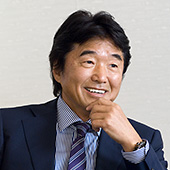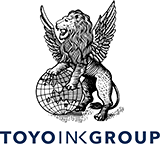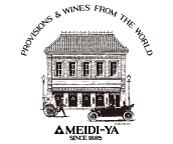ABOUT
KYOBASHI TIMES
Purpose of our job

Tokyo is enjoying its progress as one of the largest cities in the world. Kyobashi is in its central area. It is well discussed as a town of commerce and a town of art. Its history goes back to more than 400 years. Since the founder of Tokugawa Shogunate Iyeyasu picked up Edo as his home ground, the area created variety of culture and has always maintained its unique existence that people from all over the world pay attention to. Kyobashi is located in its “belly button” and has experienced many dramatic changes.
Landmark of “Kyobashi” started from an arched stone-built “Kyobashi Bridge”, a bridge over Kyobashi River, in 1875 (Meiji 8) which was removed later. In 1876, from Kyobashi to Shinbashi, a brick town of Ginza, a symbol of Meiji civilization and enlightenment was completed. Between Nihonbashi, who has many Edo remains and a modern town Ginza, Kyobashi has always been a heart of commercial activities. There are many companies who founded their business between Edo and Meiji era. Kyobashi is known for a town to have many headquarters of companies. One of the charms of Kyobashi is to have traditional merchants who have business for hundreds of years next to brand new commercial facilities. People may have image of Kyobashi as a town of Edo culture and Meiji civilization and enlightenment but Kyobashi is not only for that. It is an ever progressing spot representing the latest Tokyo.
In this website, you may find the new and unknown aspects of Kyobashi that you do not easily found in general. Here, you see unknown commercial points, can read enchantments of Kyobashi heard directly from people who know well of the area and guidance of walking route where our staff themselves visited. There are, of course, reports on the latest findings on restaurants, arts and many others.
Kyobashi is only less than a minute from Tokyo Station. To fully utilize this excellent convenience, we guide you the best use of nearby facilities. In our website, we successfully squeeze in all great useful information for you to enjoy Kyobashi in full manner.
AMBASSADOR
Kyobashi, a town that entertains you with changes over time
“Even though the scenery changes over time, Kyobashi maintains its warmth.”
I was born and raised up in Kyobashi. I lived there for almost 30 years from my birth to marriage. My family ran a sport equipment shop and also a café. I used to help my parents with the delivery service, which familiarized myself with the map of the town in details.
Looking back 1950s to 1960s, we used to be able to see Mt. Fuji from Kyobashi. It remains vivid in my memory – the beauty of the mountain shining in the sunset. It was a time where you would still see in your neighborhood coal storages for trains, kids keeping carrier pigeons and trolley running on the street.
It was around the time of Tokyo Olympic in 1964 the town went through a dramatic change. Reinforced concrete buildings dominated over small shops, which transformed the town in to a business district. But what makes you feel special about Kyobashi is that the sense of slowness it gives you. Perhaps it is something indigenous.
If I were to personalize Kyobashi, I’d call him a “city boy.” Well educated yet with humor and playful sense. He would wear a white shirt, denim and loafers. He would never be obvious, but very sophisticated if looked up close. I’d call him a connoisseur who knows the real good stuff always wearing simple but very high-quality outfit. You should feel at home if you come to Kyobashi from outside. The town is very lively and the people are so friendly. Good and old tradition of duty and sentiment still remain strong in this town. I experienced all the dramatic changes of time while in Kyobashi including the post-war recovery, rapid economic growth of the country, which eventually led to the bubble burst. But even with all these changes that occurred in the history, the town remained with its “warmth.” I am confident that this “warmth of Kyobashi” will continue to be inherited to the next generation over time.
The town is going through a big change again with new buildings increasing in recent years. Kyobashi will play more frequent roles of sending out information outside. Please pay your visit to Kyobashi if you happen to have any interest.

Teruhisa Kitahara
CEO, Toys Inc./Director, Yokohama Tinplate Toy Museum
Born in 1948 in Kyobashi, Tokyo, Teruhisa Kitahara is well known as a pioneer in tinplate toy collection. Raised up in a neighborhood in Kyobashi where antique shops are sporadic, he has learnt to appreciate their virtue. In April 1986, he established “Yokohama Tinplate Museum.” He appears as an antique authenticator in a well-known TV program“Kaiun Nandemo Kanteidan” aside from his active engagement in giving speeches and lectures throughout the nation.
SPONSORS
HISTORY
The change of Kyobashi
“Kyobashi” came from a certain bridge. That bridge was on Tokaido Street (Now called Chuo Street) and it was the first bridge to connect to the capital in Kyoto. The bridge was built over the Kyobashi river which was between Kyobashi 3-chome and Ginza 1-chome in those days. New posts of the bridge were decorated with “giboshi.”
There were only 3 bridges were decorated with “giboshi” in Japan; Kyobashi, Nihonbashi and Shinbashi. This because the government thought these places were very important.
In 1959 Kyobashi river was filled up and the bridge was removed. Now you can see the Tokyo Expressway there.
In the Edo period, many towns were named after the craftsman’s work. Tokaido Street (Now called Chuo Street) connected North and South. Along it there were many craftsman towns.
Many craftsmen who worked with wood lived there. Present Kyobashi 1-chome was called “Oogamachi.” Ooga means “saw.” At first they called this town “Oogakaricho”, but it became shorter “Ogacho.”
Here are other examples:
Masakicho; wood wholesale dealers
Minami daikucho; carpenters
Okecho; craftsmen who made wooden barrels or tubs.
Around the northeast riverside of the Kyobashi bridge and Shirauo bridge (presently called Ginza 1-chome), many craftsmen who treated bamboo (they made rakes and baskets) lived. So this area was called“Takekawagishi.”“Kyobashi takegashi”detailed the situation of that time.It is one of the "MeishoEdohyakkei" painted by Hiroshige.
You can see Takegashi on the left side. It has more presence than others.
Some other craft examples include:
Minamikajicho; swordsmith
Tatamicho; people who made tatami mat for the Edo shogunate.
A lot of towns were named by people who lived there and their jobs.
In addition, there was a long and narrow town called Minami Tenmacho around present Kyobashi 1-chome and 3-chome. Horseback messengers left from here, from Odenmacho and Kodenmacho (Tenma means horse). So these three towns have “tenma” in their names.
Meiji period to Taisho period, change of the cityscape
In Meiji and Taisho period, Kyobashi prospered as the shopping street that connected Ginza and Nihonbashi. There was major damage including fires during the Great Kanto Earthquake of 1923. There were many repairs to the burned area and the street was rebuilt wider.
After that, the town became full of mountains of rubble from war. The Kyobashi river was filled with the debris and the town was rebuilt. In 1947 Kyobashi ward and Nihonbashi ward merged into Chuo ward. In 1952, the Bridgestone Museum of Art opened and Kyobashi became famous as an art town that has many galleries and curio shops.
Higashi Nakadori Street connects Kyobashi and Nihonbashi has a lot of curio art dealers so it is called “Kyobashi curio and art street.” Now there are over 100 galleries there, and you can enjoy the Tokyo Art and Antiques Festival in spring. There is a chance to enjoy art and curio for young people to old, Japanese and foreigners.
After the town was rebuilt, Kyobashi became a major city of business that has a lot of buildings that were built by many companies. There are always many people and things there, and it will be a base of business in Japan for a long time.
LOCATION
Location of Kyobashi
Location of Kyobashi
The year 1878 to 1932, Tokyo had 15 wards.The north area of one of the wards " Kyobashi wards" is present Kyobashi. The origin of the name“Kyobashi”came from a certain bridge. The bridge was in present Kyobashi 3-chome. It was made in the Meiji, Taisho era. You can see it in the same form as the olden days in the present at Chuo Street.
The town for Business, Sightseeing, and Art
Kyobashi is a base of business, because the Tokyo station is near it. There are a lot of sightseeing spots ; Tokyo National film center, Bridgestone Museum of Art (It is currently closed for construction) and so on. In recent years, Kyobashi is also known as an Art town that has many galleries and curio shops.
Good access
Kyobashi is adjacent to the Tokyo Station, Ginza and Nihonbashi. It’s a very popular place as a center of business. You can walk to 4 stations from Kyobashi.
Kyobashi station (Tokyo Metro Ginza line)
Takaracho station (Metropolitan subway Asakusa line)
Ginza-icchome station (Tokyo Metro Yurakucho line)
Tokyo station (bullet train, JR East)
Kyobashi is easy to access by car because it has an entrance and exit ramp from the Tokyo Expressway.
It is a business area on weekdays, but you can see many people who enjoy shopping and sightseeing on the weekend. Chuo Street in Ginza (this street connects Ginza and Nihonbashi) is especially full of people day and night.
People and life in Kyobashi
Kyobashi is in an excellent location in the downtown area. It is an old Japanese town with many old stores that have a long history. People in Kyobashi take good care of their connection and community. You can see traditional Japanese mikoshi (portable shrines) and feel Japanese passions at the Sanno Festival. People of Kyobashi include the owners of traditional old style stores, and people who have moved to Kyobashi for convenience. They are attracted to this town and have kept it the same for a long time.
People who live in Kyobashi
In such Kyobashi, there are people who set up the home. Total population from Kyobashi 1-chome to 3-chome, the 442 people (in August 2015 currently). There are rooted warm living of inhabitants. Kyobashi and long-established shop owner of inheriting the tradition from the era that was originated, who newly moved up residence feel attracted to Kyobashi. Local residents that live in full of emotion Kyobashi of the earth, we will look to everyone alive.
New and old is keeping its balance coexist, town of Kyobashi. If you put a business district in the back one step alley and slip through, it’ll be from the convenient location, it is possible to glimpse a view that can not be imagined.
NEIGHBORHOOD
The center of economy, business and culture
Around Kyobashi area
From the Meiji period, the Kyobashi area is a center of business. Kyobashi is near the Tokyo station that is the gate to Tokyo. There is Ginza, which is full of department stores and luxury brand shops, the famous fish market Tsukiji, Kokyo located at the former site of Edo-jo Castle, and also the major business town Marunouchi/Otemachi with the lively downtown Yurakucho in the same area. In addition, the west is the Yaesu area on Chuo Street and to the North is Nihonbashi area on Yaesu Street.
The center of economy, Nihonbashi
There are a lot of banks, including the Bank of Japan head office and Tokyo Stock Exchange in Nihonbashi. This is because in the Edo period money exchangers lived there.
The appearance of the bank of Japan was based on the design of the Belgian national bank and it was completed in 1896. The main building (formerly a basement vault, office and document exhibition room) and the new building (the office is on the 1st floor) have been designated as important cultural property of Japan. They are elegant buildings of “the neo-baroque architecture” which adopted a renaissance style. In the east area on Chuo Street, there are Coredo Nihonbashi and Takashimaya (department stores). There you can enjoy Japanese history and shopping.
Main entrance of Tokyo, Yaesu
Yaesu area is east of the Tokyo station, and there are many restaurants, cafes and office buildings. The name of “Yaesu” came from Jan Joosten’s Japanese name “Yayousu” . He was from the Netherlands and was the Tokugawa shogun’s national information advisor and translator. The Tokugawa shogun gave him a house there.
A recommended place to visit is the huge basement shopping mall “Yaechika” under the Tokyo station and two streets. It has the biggest store space in Tokyo and is popular with business men who work around the Tokyo station, and office ladies who enjoy eating and shopping. If you want Japanese souvenirs, visit Tokyo-eki ichibangai. There are popular sweets, Tokyo souvenirs and new sightseeing spots like “Tokyo Okashi Land”, “Tokyo Ramen Street”, ”Tokyo Character Street” and so on.
There are plans for a large scale renewal around the Kyobashi area right now. One traditional old store from the Edo period continues business, and other new shopping malls and office buildings are opening. You will like this traditional Japanese because it combines the feelings of old times and the latest at the same time.



